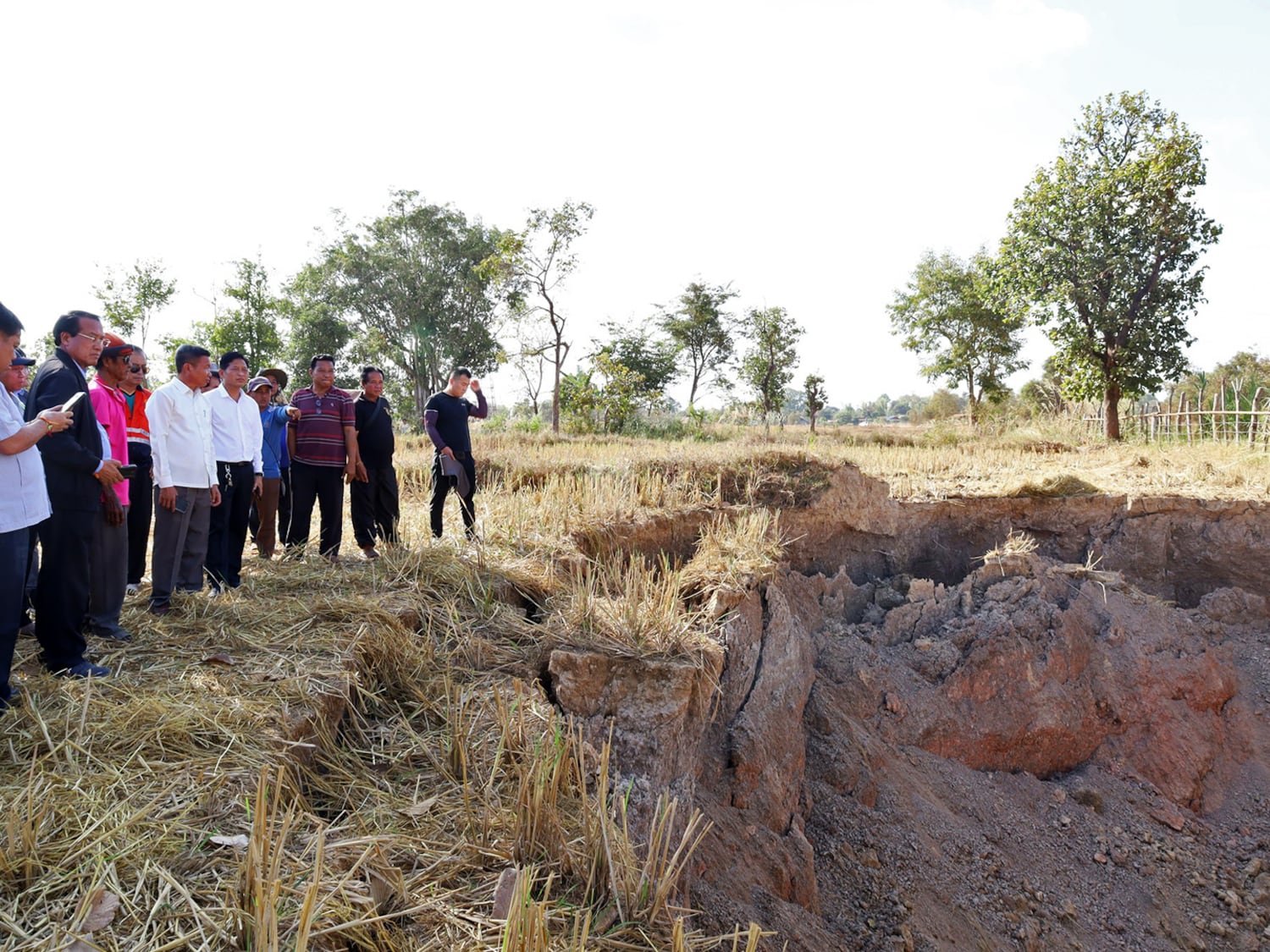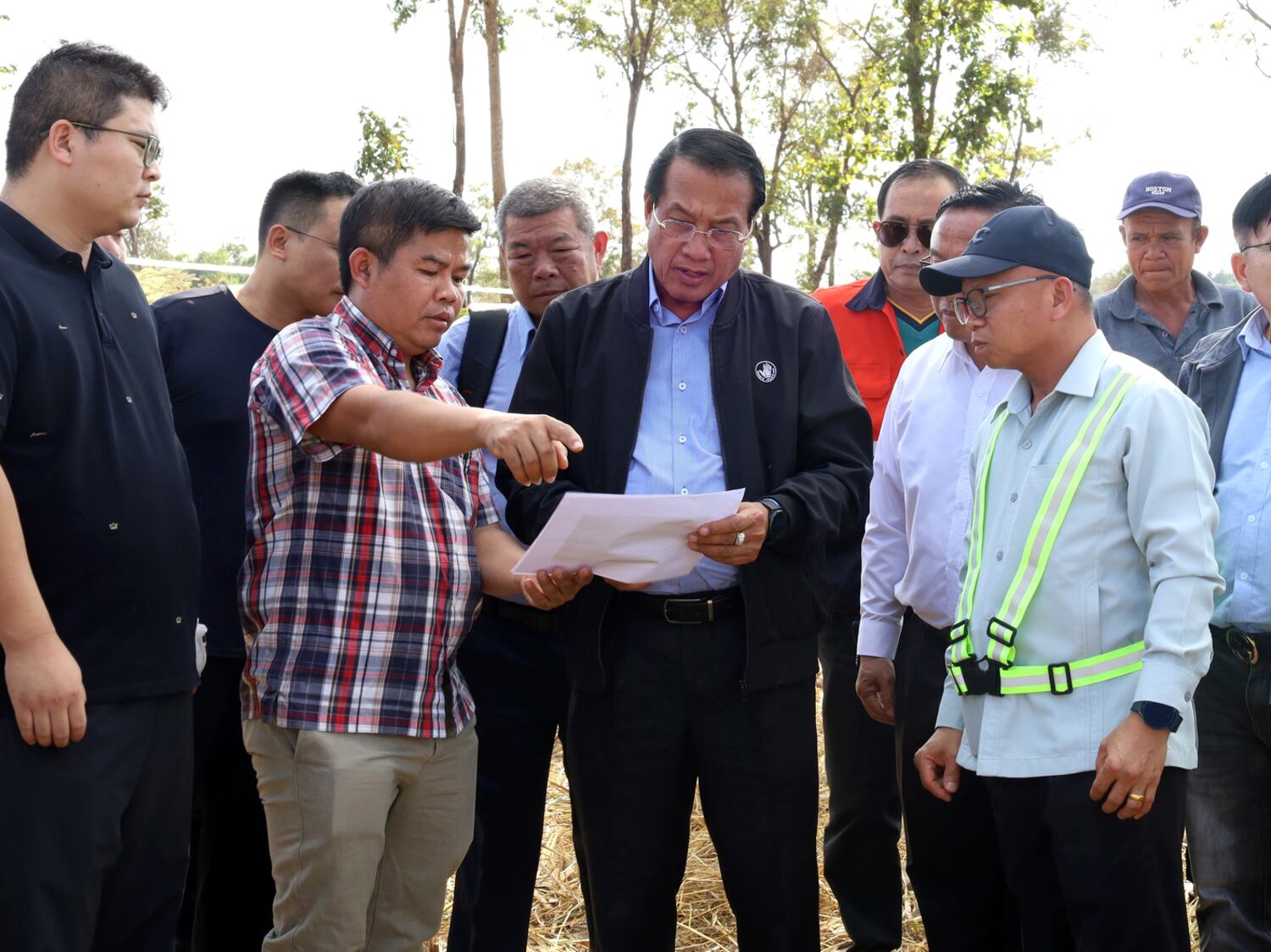A massive sinkhole that opened up in a rice paddy in central Laos’ Khammouane province was likely caused by excavation at a Chinese-owned potash mine, residents said Thursday.
Residents of Thakhaek district’s Pakpeng village discovered a 20-meter (65-foot) wide, 10-meter (33-foot) deep sinkhole on their farmland, located around 800 meters (half a mile) away from area residences, according to a report Tuesday by the Laophattana newspaper.
Residents reported hearing a loud boom at around 1 a.m. and found the depression later that morning.
In the two days since, the sinkhole has increased in size to 25 meters (82 feet) in width and 15 meters (49 feet) in depth, the Khammouane News Facebook page reported Thursday.
Photos posted to Facebook show a gaping hole that exposed several layers of substrate, containing a tree that was uprooted in the collapse.

Pakpeng villagers told RFA Laos they believe the hole was formed due to excavation at a nearby concession leased by China’s Sino-Agri Mining Development Company Limited, which operates a mine at the site.
“It happened near my rice paddy where I grow rice every year,” said one of the villagers, who spoke to RFA on condition of anonymity citing fear of reprisals. “I am not sure what caused this, but I know there is a potash mining operation [about 500 meters (1,640 feet)] from my rice paddy … It seems like they dug a ventilation shaft in the ground.”
RELATED STORIES
Lao villagers oppose granting Chinese company land for coal mining
Laos detains duo over comical pothole fishing video
Lao blogger who criticized failed response to flood freed from prison
On Wednesday, a delegation of officials from the Khammouane province Department of Energy and Mines, led by provincial governor Vanxay Phongsavanh, and Sino-Agri representatives visited the site for an initial investigation, but no conclusions were reached regarding what caused the pit to form, according to Khammouane News.
A Thakhaek district official, who also declined to be named, told RFA that an investigation is ongoing, but acknowledged that the nearby potash mine may have had a role in the collapse.

“The incident took place around 500 meters from an underground tunnel,” he said, confirming the villager’s suspicion that Sino-Agri had built a ventilation shaft for the potash mine. “The tunnel is around 300 meters (1,000) below the surface.”
Khammouane News reported that, after inspecting the sinkhole, officials ordered Sino-Agri to secure the site with a fence to prevent people and animals from falling into the pit.
Translated by Phuovong. Edited by Joshua Lipes and Malcolm Foster.
This content originally appeared on Radio Free Asia and was authored by RFA Lao.
This post was originally published on Radio Free.